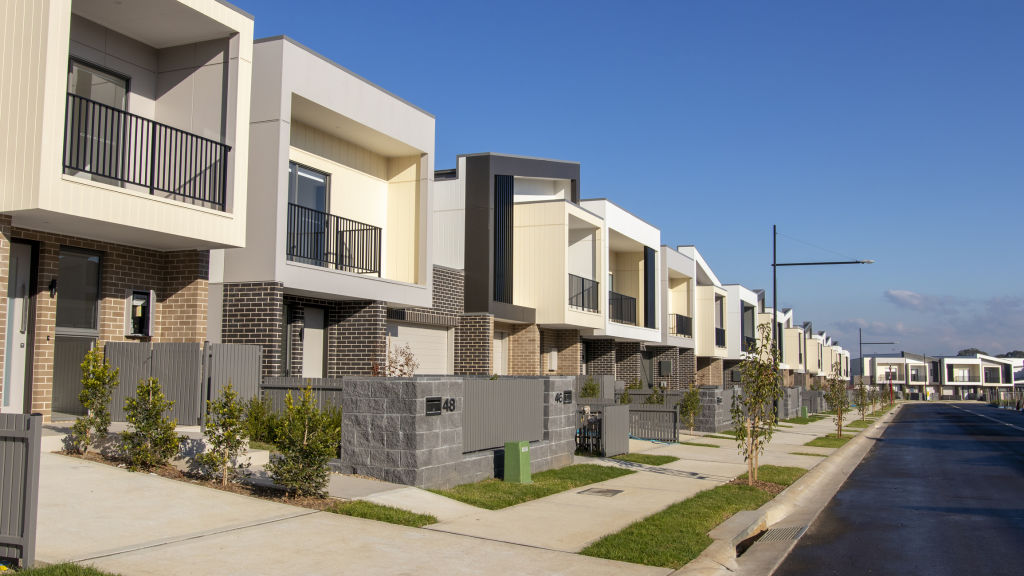What is lenders mortgage insurance, and is it really that bad?

If you’re looking for a home loan, chances are you’ve heard about a product called lenders mortgage insurance.
Better known as LMI, it’s got an almost evil reputation, and many borrowers will move heaven and earth to avoid paying it.
But is it really as bad as people make it out to be? And are there situations when you can use it to your advantage?
What is lenders mortgage insurance?
The Australian Government introduced LMI more than 50 years ago to encourage banks to lend more than 80 per cent of a property’s value, thereby allowing people with smaller deposits to get into the market.
Put simply, it’s an insurance policy designed to protect the lender from financial loss if the borrower can’t afford to meet their home loan repayments. It kicks in when you borrow more than 80 per cent of a property’s purchase price.
Pauline Blight-Johnston, chief executive of leading Australian LMI provider Genworth, says the cost is passed on to the home buyer by the lender as a fee at settlement time.
Mortgage broker and director of Soren Financial, Mansour Soltani, says it’s important not to confuse LMI, which protects your bank, with mortgage protection insurance, which protects the borrower.
“It doesn’t help the borrower in any financial way other than being able to take out the loan,” Soltani says. “If you don’t pay back the loan, that insurance company is going to pay out the bank and then come looking for you.”
Does LMI provide any advantages for borrowers?
LMI enables borrowers to get into the housing market with a smaller deposit.
“Lenders mortgage insurance helps people buy a home sooner with a deposit as low as 5 per cent,” says Blight-Johnston. “It helps home buyers from having to postpone buying a home due to the time it takes to save up the typical 20 per cent deposit.”
Take the example of a home buyer looking to purchase a $750,000 property in Sydney, where Genworth reports it takes an average of 11 years to save a 20 per cent deposit (based on an average Sydney income earner saving 20 per cent of after-tax income).
This means it will take 11 years to save $150,000. If the home buyer used LMI with a five per cent deposit of $37,500, the home buyer would only need to save for 2.5 years and could purchase the Sydney home eight years earlier.
If property prices are increasing, getting into the market so you’re on board for price growth could be more beneficial than being forced to wait and pay much more for a property.

Is it better to save the 20 per cent or pay LMI?
“It’s very much up to the individual, the market that they’re in and what costs they’re willing to stomach,” Soltani says.
A home buyer needs to ask whether the cost of LMI is validated both by the financial (capital growth and/or cash flow) and non-financial benefits (the security and stability of home ownership).
So what does LMI cost? Like stamp duty, it’s calculated on a sliding scale: the higher your loan amount and loan to value ratio (LVR), the higher the premium.
Blight-Johnston says the cost will depend on various factors, including the size of your deposit, the property’s purchase price, and the type of loan taken out.
Rates vary from bank to bank, so before you choose a lender, it’s worth shopping around for banks with lower LMI premiums, just as you would shop around for lower interest rates.
But using the Genworth LMI premium estimator, an online calculator, let’s take our $750,000 Sydney property as an example.
If you were to borrow 85 per cent, your LMI premium would be $8078.86. Bump the LVR up to 95 per cent, however, and the premium skyrockets to $29,942.81.
While Soltani says every first-home buyer he deals with pays LMI, he encourages them to avoid borrowing at the highest available LVR.
“I try to talk people out of going to that 95 per cent level,” he says. “You’re going to be saving significant start-up costs if you can bring it down to 90 per cent.”
Soltani points out that interest rates also creep up when your LVR ticks over the 90 per cent mark.
Are there any ways to avoid LMI?
There are some professionals that lenders deem to be low risk who may qualify for waived LMI.
Managing director at homeloanexperts.com.au Otto Dargan says the list includes medical professionals like doctors, vets, chiropractors, pharmacists and dentists as well as lawyers, mining engineers, professional athletes and entertainment professionals. Accountants and solicitors may also qualify.
A small number of lenders will waive the LMI for investors buying a Defence Housing Australia property regardless of their occupation.
Chief executive officers earning more than $350,000 will be considered by a handful of lenders, says Dargan, as will some high-income-earning borrowers buying in metro areas who are assessed on a case-by-case basis.
Finally, and perhaps more relevant for most first-home buyers, you can avoid LMI by taking out a guarantor loan, which allows you to borrow up to 110 per cent of the property value to cover all purchasing costs.
“Some large lenders like St George and NAB allow parents to come in and stand guarantor for the deposit, which means you don’t have to pay LMI,” says Soltani. “And if you do default on the loan, the banks will only come after your parents for the deposit, not the loan in its entirety.”

So is LMI good or bad?
“LMI can be a good thing because it forces savvy borrowers to wait until they have a bigger deposit,” says Soltani. “That gives them some equity, and they can start paying the loan down further, and once they’ve got 20 per cent, they can look to refinance. It gets borrowers into the right frame of mind for having a mortgage.”
That said, Soltani warns borrowers not to let FOMO cloud their judgement.
“My personal opinion is if you’re at the 95 per cent level, you’re really putting yourself at risk of macro-economic changes that you don’t have any control over,” he says. “And a lot of people don’t realise that if the market falls and the value of your home falls, you can be in breach of your loan contract.”
For Blight-Johnston, LMI gives borrowers more options when they’re ready to buy a home.
“We believe LMI has contributed to comparatively high levels of Australian home ownership and residential mortgage loan accessibility, supporting the housing market in Australia,” she says. “With home ownership appearing increasingly out of reach for many Australians, the importance of our function within society has never been greater.”
We thought you might like
States
Capital Cities
Capital Cities - Rentals
Popular Areas
Allhomes
More








